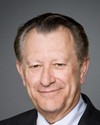We're doing that, and reporting on regulations, good and bad, and what the trends are. Our newsletter was called TRENDS in Renewable Energies. We pick up what happens at the International Energy Agency. We pick up what happens at the U.S. Department of Energy that has an impact on Canada. We get a lot of the reports that analyze, from the Conference Board through to the C.D. Howe Institute. These are some of the recent ones we've done. We get the reports and we do the critical analysis of what this means for renewables in Canada.
Evidence of meeting #16 for Indigenous and Northern Affairs in the 40th Parliament, 3rd session. (The original version is on Parliament’s site, as are the minutes.) The winning word was use.
A recording is available from Parliament.




